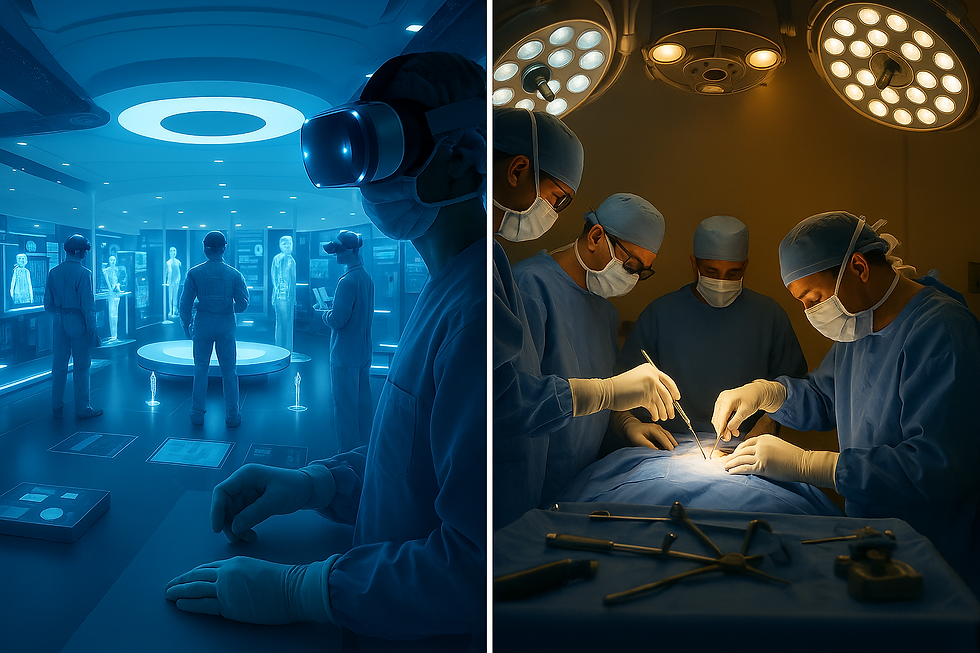From Virtual Hands to Steady Hands: How VR is Transforming Surgical Skill Transfer
- elkaoommen
- Aug 5
- 2 min read

Walk into a modern surgical training centre today and you’ll find more than textbooks and scalpels, think VR headsets, lifelike digital organs, and tools that simulate real surgical touch. Virtual reality (VR) is rapidly becoming central to how future surgeons are trained. But does time spent in a virtual OR truly prepare someone for the real thing?
Why VR Matters in Surgery?
VR training lets students practice procedures in a safe, controlled space, with no risk to patients. It allows repeated practice, real-time feedback, and personalized learning. More importantly, it’s not just engaging, it’s effective.
Research shows that VR-trained residents complete procedures faster and with fewer errors. One major study found that trainees who performed well in VR also performed better in real surgeries, with some reaching proficiency 30–50% faster than those using traditional methods.
Proving the Skills Transfer
It’s not enough for VR to look good, it must lead to real clinical results. That’s where validation frameworks like Messick’s come in. They assess whether simulations teach the right skills, provide fair scoring, and ultimately improve patient outcomes.
Tools like GEARS (for robotic skills) and OSATS (for general surgical skills) bridge the gap between virtual training and real-world readiness. Modern simulators also track metrics like errors, instrument motion, and time offering objective proof of skill development.
What Makes VR Work Best
VR training works best when it:
Demands proficiency before progression
Offers realistic feedback (especially with haptics)
Includes structured, objective feedback
Adapts to individual learning needs
Students with strong visual-spatial skills or prior VR/gaming experience often progress faster, making personalized learning paths even more valuable.
The Road Ahead
Challenges remain. Haptic realism is still developing. Most studies focus on short-term gains, and VR systems can be costly. Still, the future is promising. AI-powered feedback, full-procedure simulations, and greater integration with real-world clinical milestones are already underway.
Conclusion
Virtual reality is more than a training trend. It’s reshaping surgical education. When designed and validated well, VR accelerates learning, boosts safety, and prepares surgeons more effectively than ever. The result? Faster procedures, fewer mistakes, and better patient care.
The next generation of surgeons won’t just be skilled, they’ll be VR-trained, tech-savvy, and OR-ready from day one

Comments